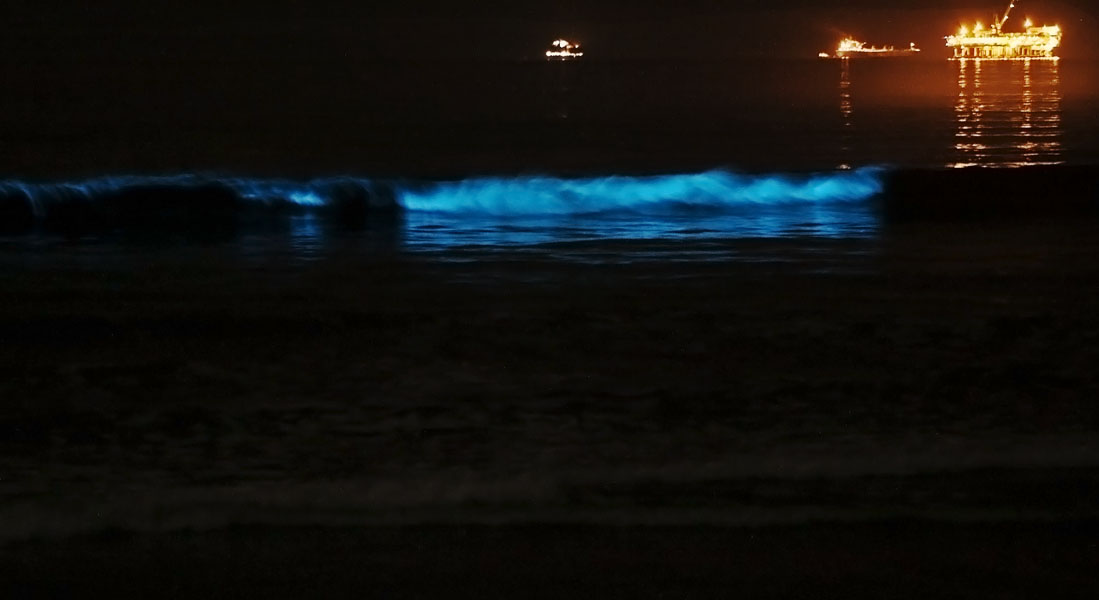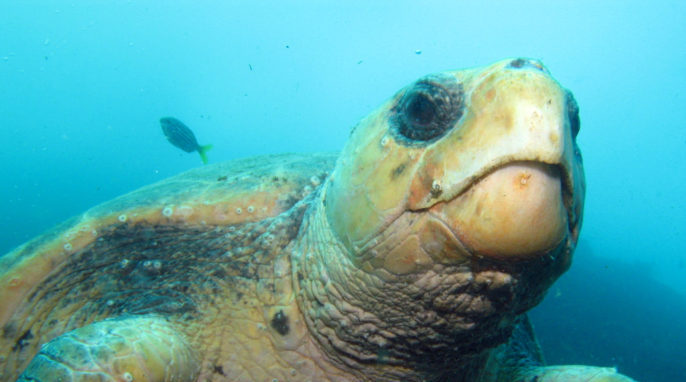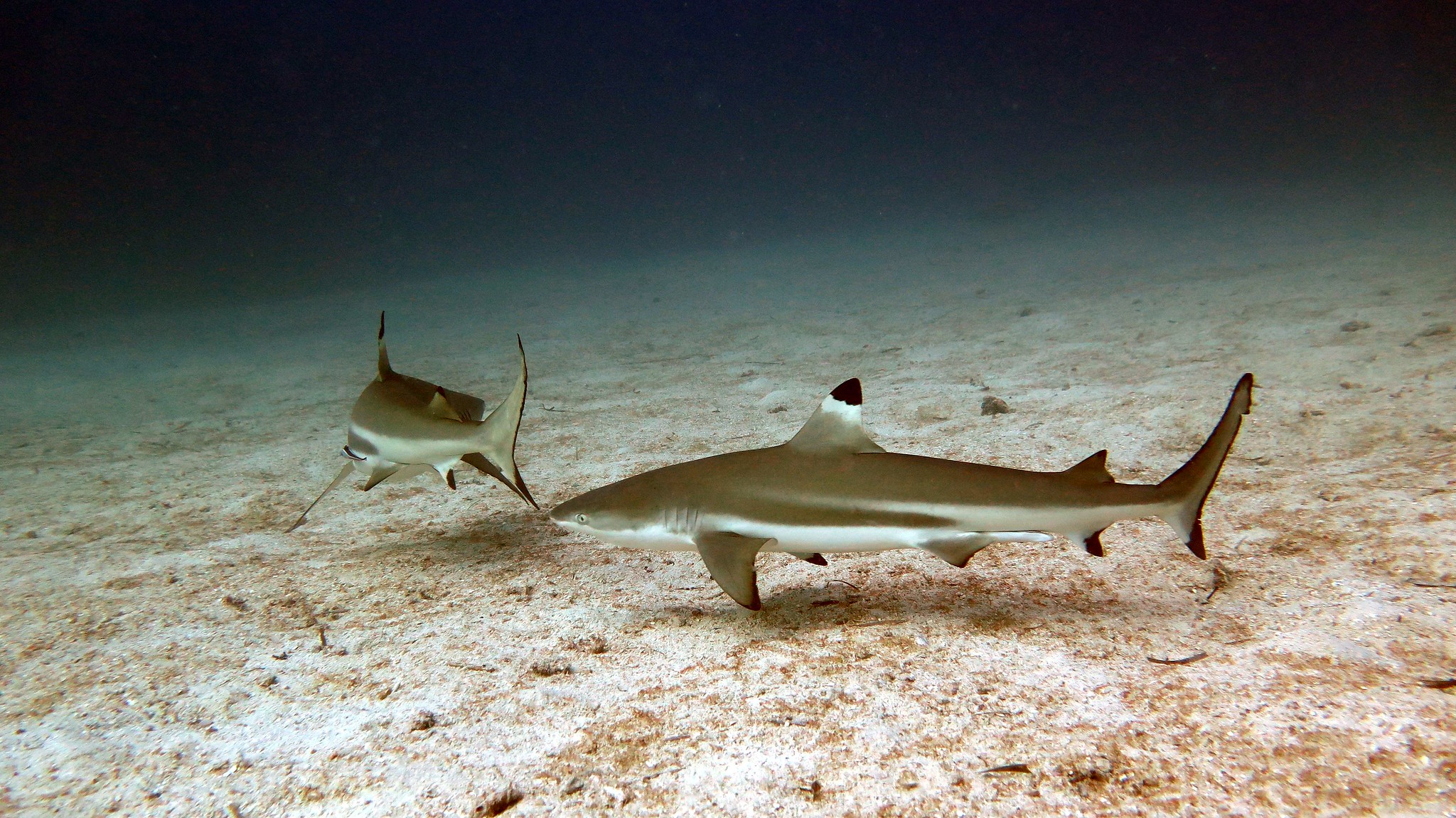That trip to the beach might come with a show: bioluminescence makes sparks of blue light that sometimes flash in water at night. Read on to learn how it happens.
Many of us enjoy watching twinkling stars in the night sky. We may not be able to go very close to these stars, but we can catch similar sparkles on land. These sparkles light up many beaches around the world in the form of blue lights.
What are these blue lights?
These blue lights are also known as bioluminescence. Bioluminescence comes from bio (living) + luminescence (light producing), which means the light produced by living creatures. Various creatures in the water glow, such as algae, crustaceans, fish, jellyfish, and squid. Bioluminescent dinoflagellates (a kind of algae) light up many beaches and waves around the world. One of these dinoflagellates are rightly called sea sparkles as they make the sea sparkle blue! However, not all dinoflagellates can glow.
RELATED: Ocean Conservation and Citizen Science at the Long Beach Scuba Show
What are algae?
These are creatures found in the water and most of them can produce their own food like plants, by photosynthesis. There are many kinds of bioluminescent algae. Bioluminescent algae are mainly found on the surface of seas and oceans. Some of these organisms are carried by water, while others such as dinoflagellates can swim actively in the water.
How do dinoflagellates produce bioluminescence?
Blue flashes occur when waves or predators move around dinoflagellates. These movements lead to a chemical reaction that produces light. This chemical reaction requires a chemical called luciferin, as well as oxygen, the right conditions, and an enzyme called luciferase. If we took some water with bioluminescent dinoflagellates in a glass beaker and twirled it in the dark or at night maybe we could see blue flashes. You can get the help of a trained professional for this experiment, but using sea water with bioluminescent algae might be a bad idea. Read on to find out why this is so.
Why do living organisms produce bioluminescence?
Living organisms use bioluminescence to protect themselves, to attract mates, to communicate, and to camouflage. Think of this like using glow sticks to protect yourself or to make friends or to warn someone. Dinoflagellates specifically flash their bright blues to protect themselves from their predators, copepods.
There could be three different ways in which bioluminescence can protect dinoflagellates. One is that this blue light startles the predators away from the dinoflagellates. In a lab experiment, scientists found that artificial blue light can scare away copepods from dinoflagellates. This could give dinoflagellates time to escape from predators. This is almost like skunk stink bombs, or the cloud of ink used by octopi.
Secondly, most dinoflagellates are poisonous. The blue light warns copepods to keep away. The predators remember this warning sign and will steer clear of dinoflagellates, although there aren’t many experiments to prove this.
Lastly, dinoflagellates can use bioluminescence as a “burglar alarm” to alert bigger predators. This could act as an invitation to munch on copepods. Scientists have observed that more copepods get eaten when bioluminescent dinoflagellates are present. The copepods completely avoid dinoflagellates when there is a large grouping of them.
Why can we see sparkly waves at nighttime only?
There is a reason why bioluminescent dinoflagellates glow only at night. Just like we sleep at night and are awake in the daytime, bioluminescence also goes through this cycle. So, there is hardly any bioluminescence during the day, but a bright glow at night. Remember the chemicals we learned about earlier? These are destroyed in the daytime and made at nighttime. In other cases, the storage unit of these chemicals is put away so that it is not affected by movement. This ensures that there is no bioluminescence during the day.
When can we see these blue lights? Where are they found?
Beaches around the world can glow blue at night. If there are enough bioluminescent dinoflagellates in the sea or ocean near you, you might be treated to spectacular displays. All you must do is to be away from city lights. These displays don’t last forever. They last as long as the chemicals causing bioluminescence last. It is okay if you miss the display one night, you can always come back the next night, when the chemicals are fully stocked.
Are too many dinoflagellates good or should we be concerned?
Too many dinoflagellates indicate an algal bloom. Algal blooms happen when there is a growth explosion of algae. This happens when there are too many nutrients in the waters. This can be harmful for other organisms in seas and oceans. In fact, global warming and climate change are affecting how frequently these blooms occur. These blooms are called red tides as they appear red brown in color during the daytime.
RELATED: A Two-way Interaction: Ocean and Climate
Many dinoflagellates produce harmful substances normally and more so during red tides (as there are more dinoflagellates). These can harm us if we come in contact, either by touching the waters with these substances or eating something with these substances. This is the reason why many beaches put up red tide warning signs. It might be very hard to know which seas contain which dinoflagellates. There are chances that poisonous and non-poisonous dinoflagellates are present together.
It might not be a good idea to swim with these sparkly blue lights at night. You never know what dangers might be lurking in the water or near the water, like jellyfish or other creatures. You can always enjoy the dazzling display safely from a distance.
Learn more about protecting water sources with Surfrider Volunteers Protect Public Health at the Beach
References
Fajardo, C., De Donato, M., Rodulfo, H., Martinez-Rodriguez, G., Costas, B., Mancera, J. M., & Fernandez-Acero, F. J. (2020). New perspectives related to the bioluminescent system in dinoflagellates: Pyrocystis lunula, a case study. International Journal of Molecular Sciences, 21(5), 1784. https://doi.org/10.3390/ijms21051784
Hanley, K. A., & Widder, E. A. (2017). Bioluminescence in dinoflagellates: evidence that the adaptive value of bioluminescence in dinoflagellates is concentration dependent. Photochemistry and Photobiology, 93(2), 519–530. https://doi.org/10.1111/php.12713
Kamerlin, N., Delcey, M. G., & Lindh, R. (2020). Unravelling the mechanism of pH-regulation in dinoflagellate luciferase. International Journal of Biological Macromolecules, 164, 2671–2680. https://doi.org/10.1016/j.ijbiomac.2020.08.071
Lindström, J., & Latz, M. I. (2019). Bioluminescence in eukaryotic microbes. In T. M. Schmidt (ed.), Encyclopedia of Microbiology (4th ed., pp. 526–535). Elsevier. https://doi.org/10.1016/B978-0-12-809633-8.20895-9
Starr, M., Lair, S., Michaud, S., Scarratt, M., Quilliam, M., Lefaivre, D., Robert, M., Wotherspoon, A., Michaud, R., Ménard, N., Sauvé, G., Lessard, S., Béland, P., & Measures, L. (2017). Multispecies mass mortality of marine fauna linked to a toxic dinoflagellate bloom. PloS ONE, 12(5), e0176299. https://doi.org/10.1371/journal.pone.0176299
Valiadi, M., & Iglesias-Rodriguez, D. (2013). Understanding bioluminescence in dinoflagellates—how far have we come? Microorganisms, 1(1), 3–25. https://doi.org/10.3390/microorganisms1010003
Cover image “Biolumin’ Essence” by makelessnoise is licensed under CC BY 2.0. Taken on October 8, 2011 at Seal Beach, California, US.

About the Author
Vaishnavi Sridhar completed her PhD in Cell and Developmental Biology from the University of British Columbia. She loves discussing science, taking nature walks, and cooking in her free time. Follow Vaishnavi on LinkedIn or X (formerly Twitter) @VaishnaviSrid10.




